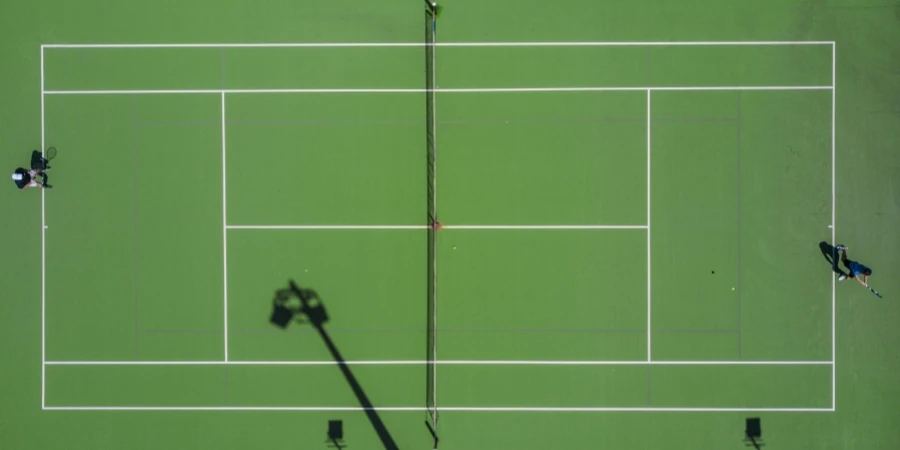Table of Contents
● Introduction
● Market overview
● Things to consider when selecting tennis court equipment
● Best tennis court equipment, models, types, and their features
● Conclusion
Introduction
Selecting the right tennis court equipment is more than just a matter of preference; it’s essential for optimizing both gameplay and court maintenance. High-quality equipment ensures that the court not only looks professional but also functions at its best, providing players with the best possible experience. From the net that defines the game to the posts that hold it in place, every piece of equipment plays a critical role in the sport. The right choices can significantly enhance performance by providing consistency, durability, and safety. Poor-quality or mismatched equipment, on the other hand, can lead to issues such as uneven net tension, frequent replacements, or even safety hazards. Therefore, careful consideration and investment in the right products are crucial. Whether you’re equipping a new court or upgrading an existing one, understanding the impact of each piece of equipment on the overall play and court longevity is key. By focusing on quality and suitability, you can create a playing environment that meets professional standards and ensures that every match is played on a reliable and well-maintained court.
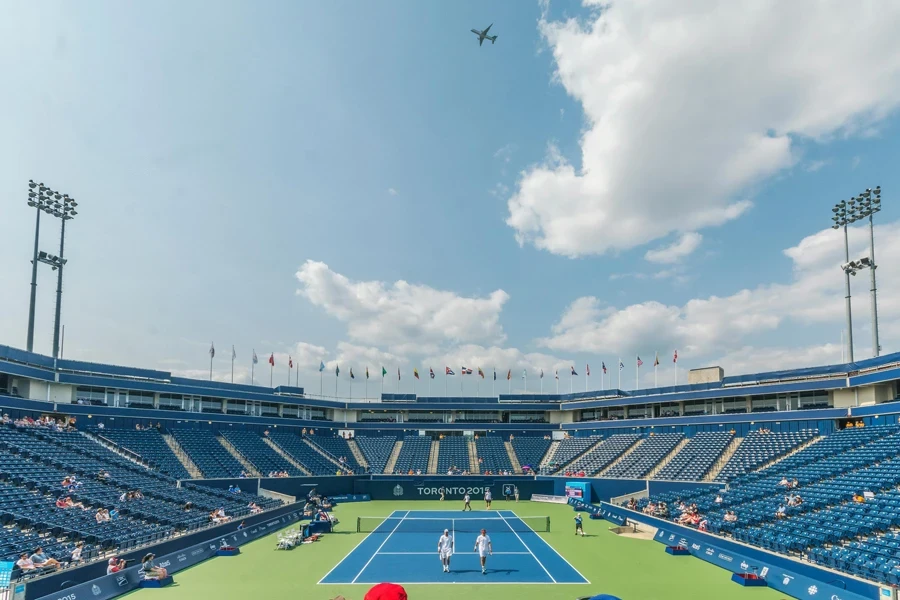
Market overview
The global tennis equipment market is on a consistent growth trajectory, marked by a projected Compound Annual Growth Rate (CAGR) of 2.6% from 2023 to 2033, according to Future Market Insights. This growth is driven by technological innovations, such as biomechanical engineering and nanotechnology, which are enhancing the performance and durability of tennis equipment. These advancements have allowed players to optimize their natural movements and reduce strain, contributing to the sustained demand for high-quality products. Additionally, the increasing cultural inclusivity within tennis, with brands catering to diverse communities and regions, is further propelling market expansion. The sport’s rising popularity in emerging markets and the growing focus on player development and sustainable practices are also significant factors fueling these changes.
The market value of the global tennis equipment industry is estimated at $9.24 billion in 2023, with expectations to reach $12 billion by 2033, as reported by Future Market Insights. The United States dominates the market, holding over 30% of the global share, driven by a robust tennis culture and continuous demand for top-tier equipment. Meanwhile, regions like China and India are experiencing rapid market growth, with China projected to achieve a CAGR of 2.7%, reflecting the increasing number of tennis enthusiasts and facilities. India is also expected to see substantial growth, with a 2.5% CAGR, fueled by grassroots initiatives and a rising interest in the sport. The United Kingdom follows with a 2% CAGR, supported by the country’s deep-rooted tennis traditions and major tennis events. These figures underscore the global scope of the tennis equipment market, with technological advancements and cultural factors significantly influencing its development.
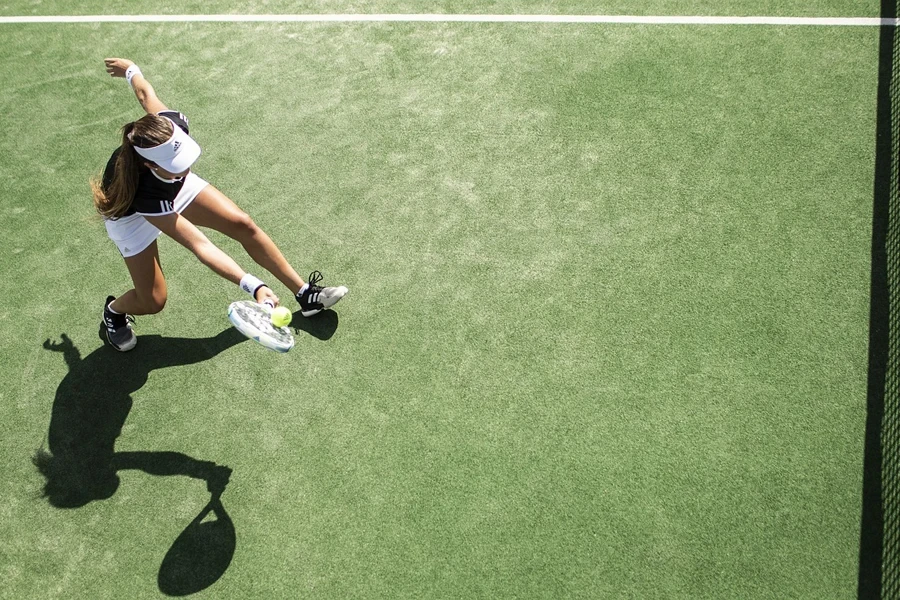
Things to consider when selecting tennis court equipment
Court surface compatibility
When selecting tennis court equipment, it’s essential to consider the type of court surface. Each surface clay, hard, or grass affects gameplay differently. For example, clay courts slow down the ball and produce a higher bounce, making matches longer and more strategic. Equipment like nets and posts must be durable enough to withstand the clay’s abrasive nature and frequent maintenance needs. Hard courts, often made of acrylic or concrete, require equipment that can endure heavy impact and harsh weather conditions. Grass courts, known for their fast play and low bounce, need specialized equipment to maintain their unique playing characteristics. Choosing equipment compatible with your court surface optimizes playability and prolongs the lifespan of your investment.
Durability and material quality
The quality and durability of materials used in tennis court equipment are crucial for ensuring long-term performance. Tennis nets should be made from high-strength polyethylene to withstand constant ball impact and outdoor conditions. The posts, typically made of corrosion-resistant aluminum, need to be robust enough to support the net and resist wear and tear. Equipment exposed to the elements, like windbreaks and fencing, should also be crafted from materials that can endure sun, wind, and rain without degrading. High-quality materials not only extend the life of your equipment but also reduce the need for frequent replacements, saving costs over time.
Safety features
Safety is a critical consideration when selecting tennis court equipment. Installing protective fencing and wind screens can prevent balls from leaving the court, reducing the risk of injuries to players and bystanders. Ball netting around the perimeter of the court can also help keep the game contained and minimize disruptions. Additionally, choosing nets and posts that meet safety standards ensures that they remain securely in place during play, preventing accidents. Prioritizing safety in your equipment selection enhances the overall playing experience and maintains a secure environment for everyone on the court.
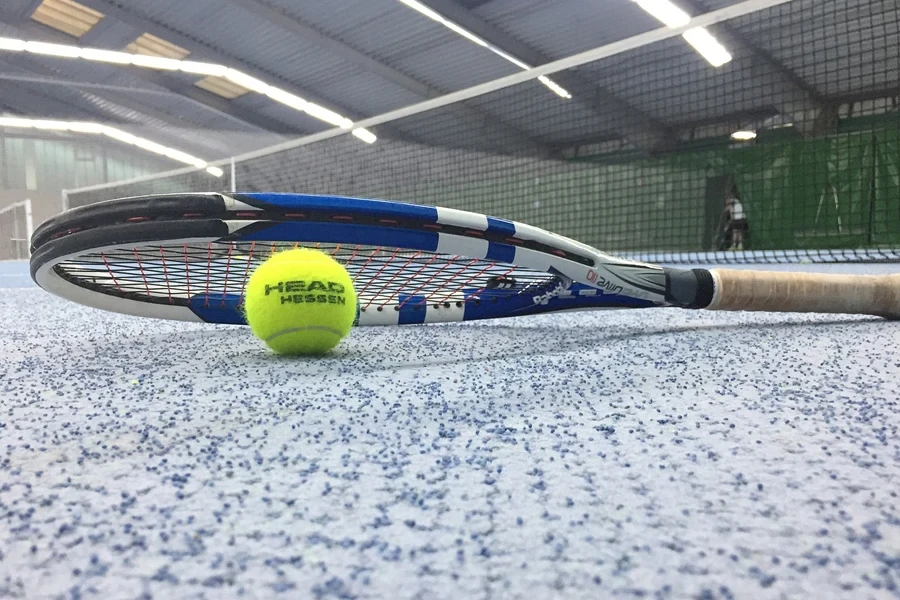
Customization and aesthetics
Customization options, such as logo-printed windbreaks and custom-colored nets, can significantly enhance the aesthetics and professionalism of your tennis court. Personalized equipment not only reflects your brand or organization but also adds a unique touch that can set your court apart. Customization options allow you to match your court’s appearance with your branding, creating a cohesive and visually appealing environment. These enhancements can make your court more attractive to players and spectators alike, offering a more engaging and professional atmosphere.
Maintenance requirements
Regular maintenance is necessary to keep your tennis court in top condition, and the equipment you choose should facilitate this process. For example, hard courts benefit from water removers and line sweepers that keep the surface clean and safe. On clay courts, drag brooms and line sweepers are essential for maintaining the court’s texture and appearance. Selecting equipment that is easy to maintain and designed for your specific court surface reduces the time and effort needed to keep the court playable. This consideration is crucial for ensuring that the court remains in excellent condition and ready for play at all times.
Ease of installation and portability
Ease of installation and portability are important factors when selecting tennis court equipment, especially if your court is used for multiple purposes. Portable net systems, for instance, allow for quick setup and removal, making them ideal for multi-use facilities. Similarly, easy-to-install posts and accessories can save time and labor during court setup and maintenance. Equipment that is both durable and easy to manage offers greater flexibility, enabling you to adapt your court to different needs and ensuring that it can be ready for play with minimal effort.
Best tennis court equipment, models, types, and their features
Top tennis nets
Selecting the right tennis net is crucial for ensuring a professional playing experience. The best professional nets are typically made from high-quality polyethylene, known for its strength and durability. These nets are designed to withstand intense gameplay and exposure to the elements, making them ideal for both indoor and outdoor courts. The net’s mesh size and string thickness are key factors that contribute to its durability and performance. Nets with double-layered headbands are also popular because they offer additional reinforcement at the top, where the most wear and tear occurs. Additionally, the ease of attachment and tension adjustment features are important to ensure the net remains securely in place during play.
Net posts and anchoring systems
Net posts are essential for maintaining the tension and height of the tennis net, and choosing the right type is important for court functionality. Permanent net posts are typically made of galvanized steel or aluminum, offering excellent stability and resistance to corrosion. These posts are ideal for courts that are frequently used and require a reliable, long-term solution. On the other hand, portable net posts are designed for flexibility and ease of installation. These posts are often made from lightweight yet sturdy materials like aluminum, making them easy to move and set up. The choice between permanent and portable posts depends on the specific needs of the court, with permanent posts being more suitable for dedicated tennis facilities and portable posts being ideal for multi-use spaces.
Advanced equipment
To create a fully equipped tennis court, several advanced pieces of equipment can enhance the playing experience. Umpire chairs are a key addition, providing a comfortable and elevated position for officials to oversee matches. High-quality umpire chairs are typically made from durable materials like powder-coated steel, ensuring they can withstand outdoor conditions. Wooden scoreboards are another valuable addition, offering a traditional and professional way to keep track of scores during matches. Practice backboards are also essential, especially for training purposes, allowing players to practice their shots and improve their skills without needing a partner. These pieces of equipment contribute to a professional court environment, enhancing both player performance and spectator experience.
Maintenance tools
Proper maintenance tools are essential for keeping a tennis court in optimal condition. Water removers are particularly important for hard courts, helping to clear standing water quickly after rain. These tools typically feature squeegee-like designs that effectively push water off the court surface. For clay courts, tools like drag brooms and line sweepers are necessary to maintain the surface’s texture and appearance. Drag brooms are used to smooth the court surface, while line sweepers help keep the court lines visible and clean. Scarifiers are also useful for loosening the clay surface to prevent compaction. Investing in high-quality maintenance tools ensures that the court remains safe and playable, regardless of weather conditions or usage frequency.

Fencing and windscreens
Fencing and windscreens are critical components of a well-equipped tennis court. Fencing, usually made from durable materials like vinyl-coated chain-link, serves to keep balls within the court and protect the surrounding area from stray shots. Windscreens, on the other hand, are made from mesh fabrics that reduce wind interference during play. They also provide privacy and can be customized with logos or colors to enhance the court’s aesthetic appeal. Both fencing and windscreens contribute to a better playing environment by minimizing distractions and maintaining a consistent playing surface.
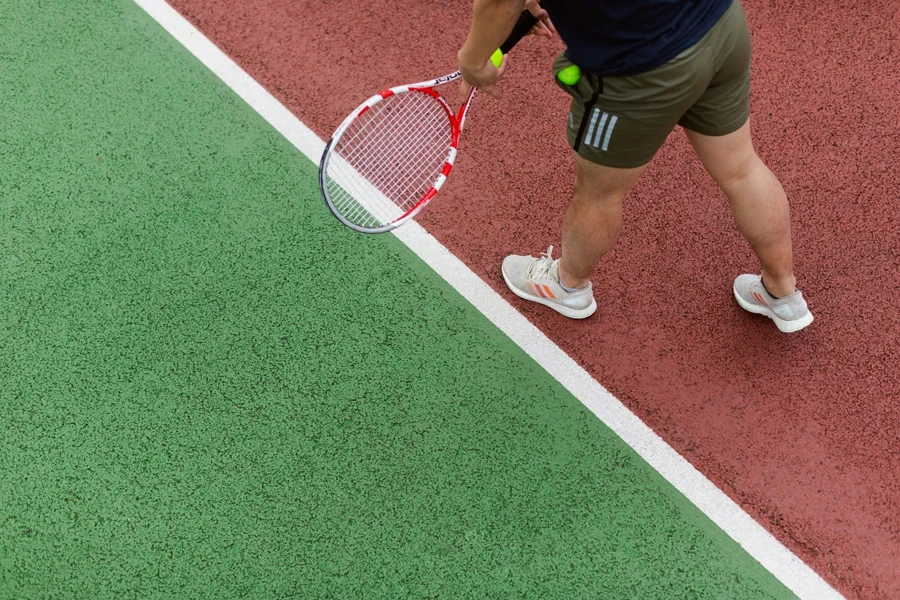
Conclusion
Investing in high-quality tennis court equipment is essential for ensuring optimal performance, safety, and longevity of the court. Whether it’s selecting durable nets and posts that withstand the demands of intense play, choosing advanced equipment that enhances the overall game experience, or ensuring proper maintenance with the right tools, every aspect of the court setup contributes to the quality of play. High-quality materials and well-designed products not only elevate the level of play but also reduce the need for frequent replacements, providing long-term value. Safety is another critical factor, with fencing, windscreens, and secure net systems playing key roles in protecting players and maintaining a professional environment. By prioritizing quality in every piece of equipment, you create a tennis court that not only meets but exceeds the expectations of players and spectators alike, fostering an environment where the sport can be enjoyed to its fullest.
